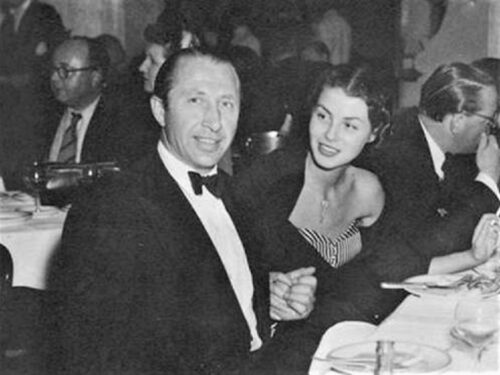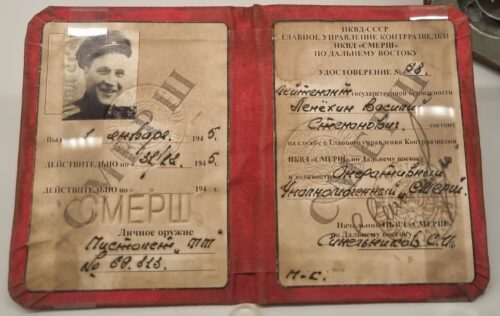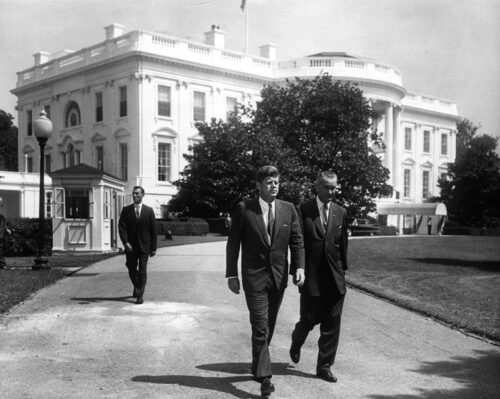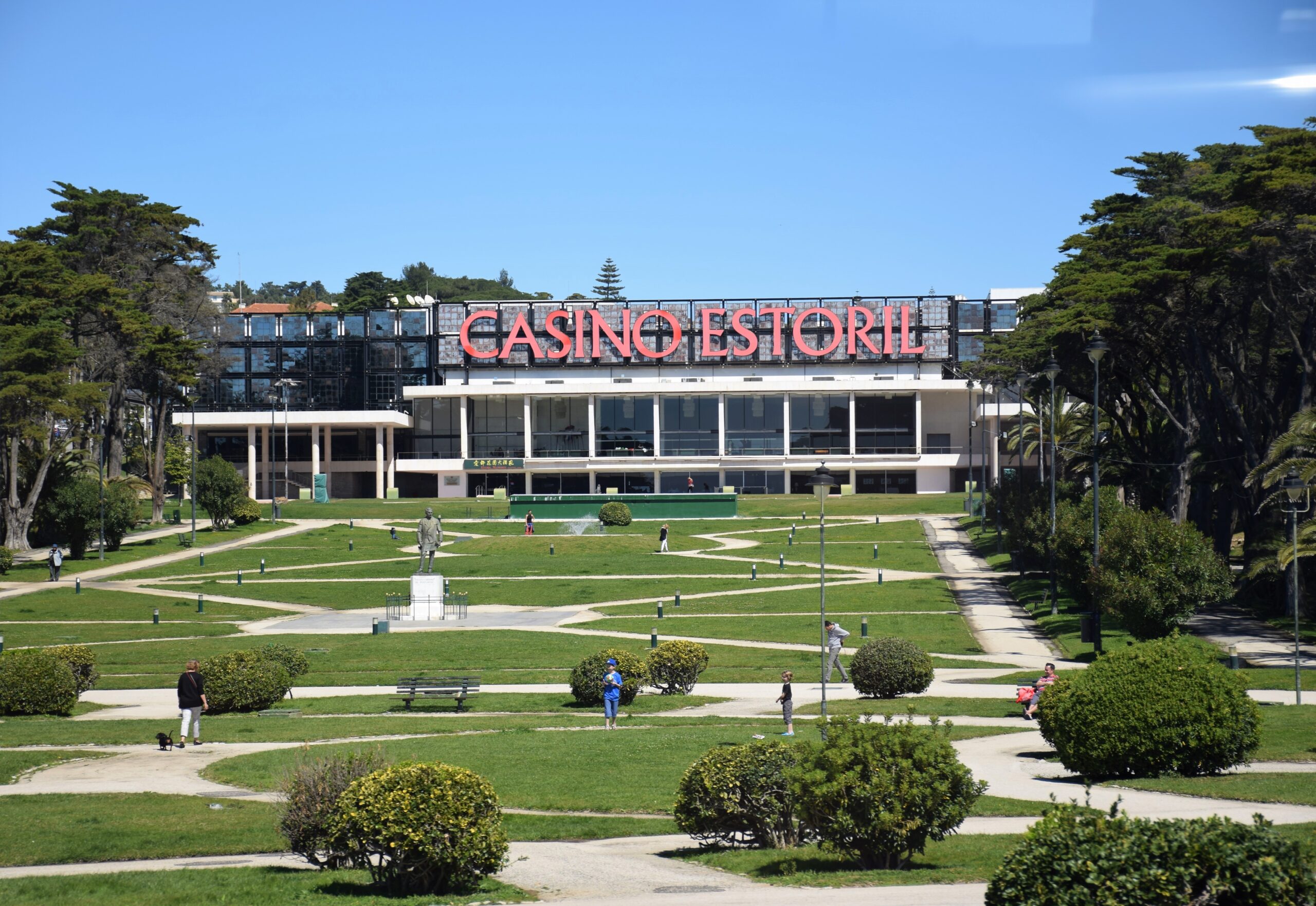A view of the Casino Estoril in Portugal, an inspiration for Casino Royale, showing the courtyard from the beach of Tamariz. The Casino Estoril was a gathering point for spies in WW2. Photo: kenward / CC BY 2.0 DEED.
This year marked the 70th anniversary of the publication of the novel Casino Royale by Ian Fleming. Ian Fleming was not only a novelist, but also an intelligence officer who served in the British naval intelligence during World War II. He was involved in several covert operations, such as the creation of a commando unit that gathered intelligence for the invasion of Normandy. He also met many people who influenced his characters, such as his boss Admiral John Godfrey, Director of Naval Intelligence, who was the model for M, Bond’s superior. He drew inspiration from his own experiences and observations for his first and most famous book, Casino Royale, which introduced the world to James Bond, the suave and sophisticated secret agent who gambles against a French Communist villain, Le Chiffre, at the casino in Royale-les-Eaux.

The novel reflects Fleming’s views on Britain’s position in the world, especially its relationship with the US and the Soviet Union, in the aftermath of the defections of two British agents, Guy Burgess and Donald Maclean. Fleming wrote the novel in 1952 at his villa in Jamaica, where he enjoyed cocktails and baccarat, two of Bond’s favorite indulgences. He named his villa Goldeneye, after a wartime operation he had planned. He also invented a new cocktail for Bond, called the Vesper, after the female protagonist of the novel, Vesper Lynd.
The plot of Casino Royale is as follows: James Bond, a British secret agent with the codename 007, is sent to a casino in Royale-les-Eaux, France, to play baccarat against Le Chiffre, the treasurer of a French trade union that is secretly controlled by the Soviet spy agency SMERSH. Bond’s mission is to bankrupt Le Chiffre and force him to defect or be killed by his own people. Bond is assisted by Vesper Lynd, a beautiful and mysterious woman who works for the British Secret Service, Felix Leiter, an American CIA agent, and René Mathis, a French agent. However, Bond soon discovers that he is in a deadly game of deception and betrayal, as Le Chiffre has a mole in his own organization, and Vesper has a dark secret that will endanger Bond’s life and heart.

The novel was partly based on Fleming’s own real life experiences during World War II, when he worked as a personal assistant to the Director of Naval Intelligence and liaised with other spy agencies. One of his inspirations was Duško Popov, a Serbian double agent who worked for MI6 and the Abwehr, passing off disinformation to Germany as part of the Double-Cross System. Popov played baccarat at the Casino Estoril. in Portugal, which was reputedly a gathering point for spies in World War II, where Fleming also visited. Popov reportedly made a huge bet with the money he had taken from the Germans to embarrass a rude opponent named Bloch. Another influence was Fleming’s wartime romance with a married woman named Muriel Wright, who was a model, a polo player, and an air raid warden. She died in 1944 when a piece of masonry hit her head during a bombing in London. Fleming was devastated by her death and later said that she was the model for Vesper Lynd, Bond’s love interest in Casino Royale.
SMERSH was a real Soviet counter-intelligence agency that operated during World War II. The name was a portmanteau of the Russian phrase “Death to Spies”. It was responsible for finding and eliminating spies, traitors, deserters and other “anti-Soviet elements” in the Red Army and the occupied territories. It was officially dissolved in 1946 and its functions were transferred to the MGB. The MGB (Ministry for State Security) was the name of the Soviet state security apparatus that dealt with secret police duties, foreign and domestic intelligence and counterintelligence, etc. from 1946 to 1953. It was the successor of the NKGB, which was briefly merged with the NKVD (Ministry for Internal Affairs) in 1941 and again in 1953. The MGB was later split off as the KGB (Committee for State Security) in 1954. SMERSH became famous in the West as the main antagonist of James Bond in the early novels by Ian Fleming, who used the name of the real agency but fictionalized its activities and goals.

Casino Royale was published in 1953 and received positive reviews from critics, who praised Fleming’s originality and flair. The novel spawned a series of sequels and adaptations, including three films with different actors playing Bond: Barry Nelson in a 1954 TV episode, Sir David Niven in the 1967 release spy parody film, and Daniel Craig in his first appearance as James Bond in the 2006 release film. Casino Royale is widely regarded as one of the best spy novels of all time, and a landmark in the genre that influenced many writers and filmmakers. It made James Bond a cultural icon.
One of the factors that contributed to the popularity of James Bond was the endorsement of President John F. Kennedy, who was a fan of the spy novels by Ian Fleming. In 1961, Kennedy listed From Russia with Love as one of his favorite books in an interview with Life magazine. This boosted the sales of the book and sparked the interest of Hollywood producers, who soon adapted it into a film starring Sean Connery as 007. Kennedy also invited Connery to the White House and screened Dr. No, the first Bond film, at his private cinema. The president’s fascination with Bond reflected his own image as a young, charismatic and adventurous leader, who faced global threats and challenges with courage and wit. Kennedy’s association with Bond also helped to create a cultural phenomenon that captivated audiences around the world, who were drawn to the thrilling escapades, exotic locations and glamorous women of the Bond franchise.

Resources
The Official James Bond 007 Website
007.com
The Official Website for Ian Fleming
IanFleming.com
*The views and opinions expressed on this website are solely those of the original authors and contributors. These views and opinions do not necessarily represent those of Spotter Up Magazine, the administrative staff, and/or any/all contributors to this site.

